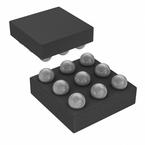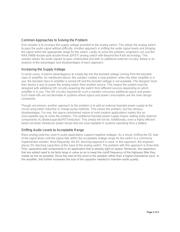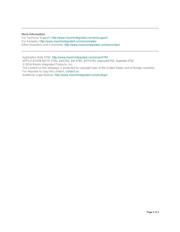下载

Keywords: audio amplifier, boosted class d, audio switch
APPLICATION NOTE 5792
MULTIPLEX BOOSTED CLASS-D WITHOUT
ADDITIONAL EXTERNAL CIRCUITRY
By: Jeremy Georges
Abstract: Boosted class-D amplifiers drive speakers with voltages greater than the supply voltage. These
amplifiers are becoming more common because they allow higher performance audio from a single lithium-
ion battery. Most boosted class-D amplifiers, however, do not give the user access to the internal boosted
oltage. This makes it difficult to multiplex a speaker to multiple audio sources using common analog
switches. This application note discusses how the Beyond-the-Rails capability of the MAX14689 allows it to
switch these signals without additional circuitry.
A similar version of this article appeared March 2014 on EDN.
Introduction
Audio engineers increasingly use boosted class-D audio amplifiers in handheld systems due to their ability
to provide high-performance audio from low-voltage sources such as single-cell lithium-ion batteries. When
a cell phone is being used as a portable media player or a speakerphone, for instance, a class-AB amplifier
is insufficient to provide the desired clarity and volume. A class-D amplifier is used instead. When the cell
phone is used as a handset, however, the class-AB amplifier provides great performance while preserving
power. The desire to preserve power in handset-like applications while still allowing big sound in
speakerphone or media player applications makes it attractive to multiplex a single speaker to multiple
audio sources. Difficulties arise in such applications as the boosted audio signal from the class-D amplifier
often puts the audio signal outside the range of a typical analog switch. This application note discusses
®
how the Beyond-the-Rails capability of the MAX14689 allows it to switch such signals without additional
circuitry.
The Problem
Boosted class-D amplifiers provide big sound without requiring big space on a PCB. When multiplexing the
boosted amplifier to a speaker, however, a problem arises. The audio signal output by the boosted class D
is, by design, greater than the supply voltage. However, common analog switches are limited to signals
within their supply rails. Many modern analog switches have added the capability to pass signals below the
negative supply. This still poses a problem for the boosted signals from class-D amplifiers as signals above
the positive supply are not able to be passed. The boosted supply internal to the class-D amplifier is usually
not intended for use in powering external devices. Even when it is capable, the voltage is only available
when the amplifier is on. This makes use of such a supply impractical since it is not available when the
other amplifier is in use. It is, therefore, difficult to use typical analog switches in speaker multiplexing
applications without including additional circuitry. There are several ways to address this problem, and this
application note summarizes the trade-offs of each.
Page 1 of 5







